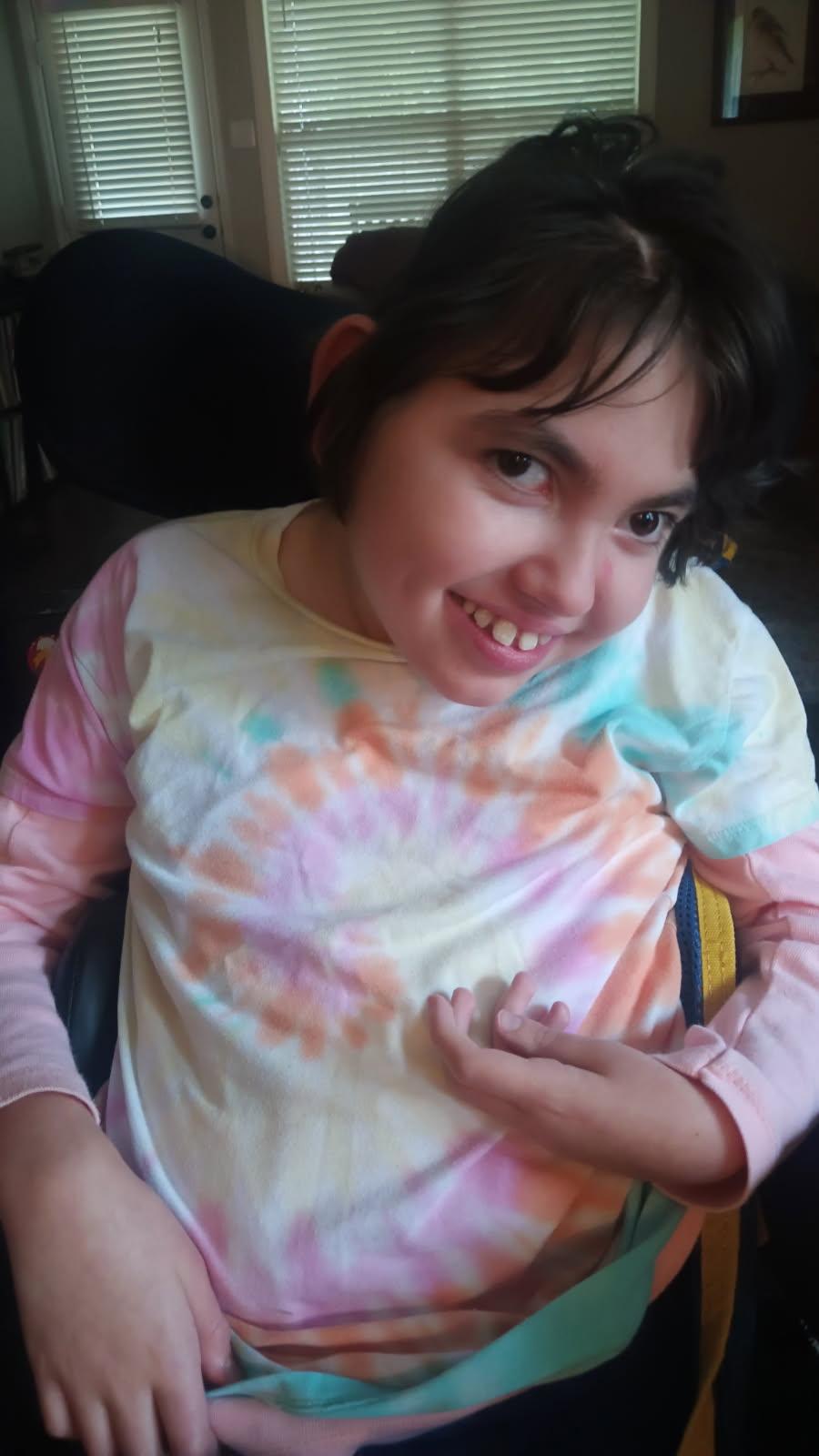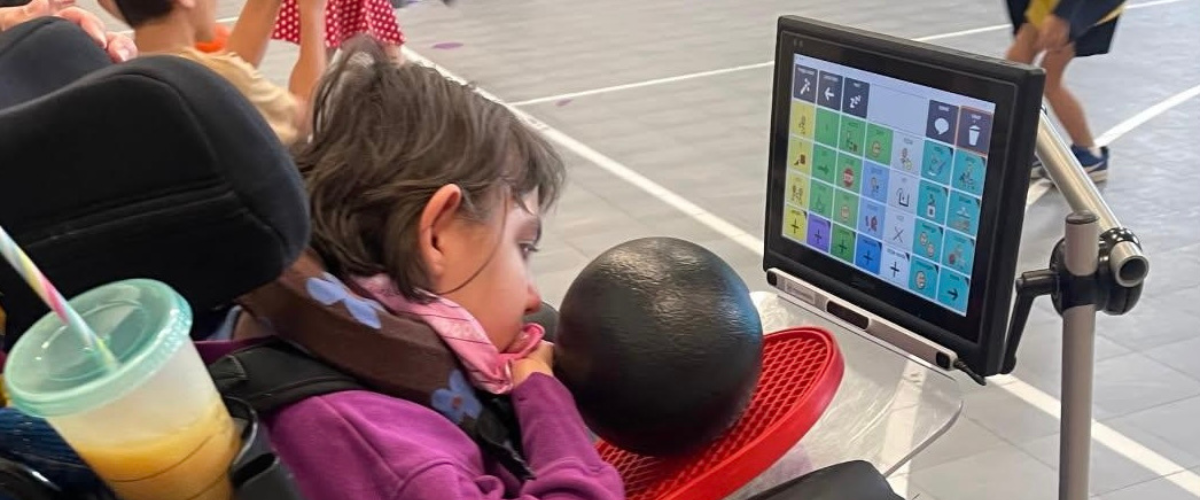
We close out Speech-Language-Hearing Month with this Client Story from Daryn Ofczarzak, Speech Language Pathologist at BridgingApps and Easter Seals Greater Houston.
Frances is a seven-year-old girl with cerebral palsy and epilepsy, who uses an eye-gaze computer to communicate. I wrote this Story with help from her mother, Kelly:
Frances likes to pick songs for morning meetings at school. She also has a great sense of humor and loves to share corny “dad” jokes with her Papa. In fact, she’s dedicated a whole page on her communication device to these jokes.
Low-Tech “Talking”
Finding ways for Frances to communicate has been quite the journey for her family. Fortunately, Frances has always been innovative. At an early age, she learned to smile or lift her eyebrows to say “yes,” and to make sounds for specific emotions.
Too many kids with similar disabilities have found themselves limited to sitting, powerless and quiet, while the grown-ups decide things for them. Frances’s parents have always worked to help her express herself. They follow her lead, learn to understand her unique messages, appreciate her potential, and encourage others to do the same.
Choosing a Technology

With the help of speech and occupational therapists, the family has tried out various AAC (augmentative and alternative communication) options:
- Low-tech picture boards
- 3-D-printed objects to represent words
- Recordable buttons
- IPad apps
Now Frances uses a Grid Pad™, and it’s been a game-changer. It not only helps her share how she is feeling, it lets her advise her caregivers. For example:
A few weeks ago, Frances’s nurse was having trouble getting fruit puree from a squeeze pouch onto a spoon. Frances noticed, and said “pour” through the Grid Pad. The nurse asked if Frances was requesting that the puree be poured directly into her mouth, instead of onto the spoon. Immediately, Frances opened her mouth to confirm that was exactly what she meant. With a single word and gesture, Frances was able to manage her own care.
The best part was that this went beyond a simple cause-and-effect communication (i.e., “I’ll use my device to tell you what I want you to do”). This wasn’t just a request, it was a clear example of problem-solving on Frances’s part. She was using the power of independent communication, speaking what was on her mind.
P. S. Tips for Finding the Right AAC Technology
- Get recommendations from therapists and fellow users, but let your child make the final decision. What works well for one individual (or even most individuals) may be the wrong choice for another.
- Don’t “settle” too quickly. You may have to try several devices before finding the perfect option. (You can test and borrow technology for free through our assistive-technology labs; or contact the Texas Technology Access Program (TTAP).)
- Patience is a virtue, not only in finding a device, but throughout the learning curve and beyond. Never tell your child (or anyone else with speech disabilities) to “hurry up.” Never jump in and finish a sentence for them. Give them time to fully express their own thoughts in their own way.
- Things (and people) change and grow. Today’s “perfect” device may not be the one your child uses for life. Keep up with the latest AAC developments, and be ready to respond when your child wants to try something new.
See also:

